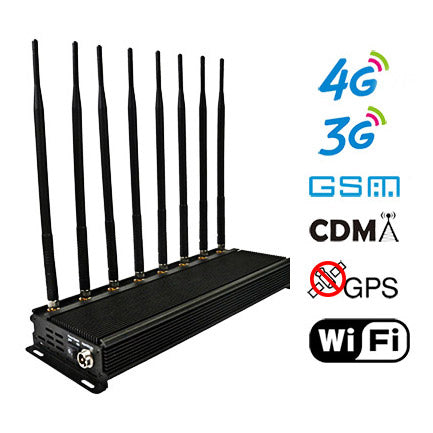How does a mobile phone signal jammer dissipate heat?
Cell phone signal blockers are high-power and high-current devices that generate heat when working. If the heat is not dissipated in time, it will affect the normal operation of the machine at best, and endanger personal safety at worst. Most similar or other power device electronic products attach great importance to the heat conduction performance of the machine.
So, how to solve the heat dissipation problem of high-power mobile phone signal jammer?

Among commonly used metal materials, silver has good thermal conductivity, followed by copper and aluminum. However, silver is expensive and is rarely used for heat dissipation; although copper has good thermal conductivity, it does not dissipate heat quickly. This may cause the signal jammer for cell phone to work 24 hours a day, and the heat of the machine cannot be dissipated, forming an invisible shield in a certain small space. heat source. If you encounter hot weather in summer, you can imagine the danger.
In contrast, aluminum is ideal. It is light and strong, conducts heat well, and dissipates heat quickly. Good CPU air-cooling radiators are made of aluminum alloy.
Therefore, the casing of Texin Electronics' high-power mobile phone signal jammer amplifier is entirely made of cast aluminum (cast aluminum alloy) material + copper strips for rapid heat conduction and rapid heat dissipation through aluminum heat sinks, giving the machine sufficient heat dissipation area.
The contact surface of the power amplifier that easily generates heat is designed with thickened copper. The copper strip can quickly absorb heat and then accelerate the heat absorption through the aluminum alloy. After being transferred, the heat has already been dissipated invisible after contact with the air.
Inside, the principle of air convection is fully utilized. Through the thermistor, it automatically detects the temperature and then starts the fan. When the heat is low, the wind speed is slow, and when the heat is high, the wind speed is fast. The heat generated by the operation of the internal components is blown outside, and the surrounding low-temperature air is replenished to form convection and circulate. The inside and outside are combined to form an ideal heat dissipation method.













